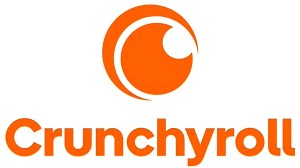
DC Comics recently announced a big rebranding effort that would refocus the publisher into three core lines: DC Kids, DC, and Black Label. DC Kids is intended for pre-adolescents and children, while Black Label is the adult brand intended for those 17 years and older. This leaves the core DC line focused on audiences 13 years and older, which implies that the majority of DC Comics’ publications moving forward will be for teens and young adults as much as the decades-long superhero fans who hit their local comic stores every Wednesday (like most of us on this site). This shift suggests that DC Ink, the publisher’s previous imprint for young adult graphic novels, will fall under the redefined DC umbrella and may become more important in the overall tone and direction of their superhero stories. That is a positive change and one firmly rooted in DC Comics’ history.
Videos by ComicBook.com
While the label “young adult” might suggest immaturity for some older readers unfamiliar with the book market, it’s a genre that is thriving outside of the world of comics, and one capable of greatly enhancing superhero fare. Young adult novels may generally feature adolescent characters, but their themes are every bit as potent and stories every bit as exciting as many superhero stories with an added eye for accessibility. This pivot towards essentially making DC the young adult line is an excellent decision, one that both respects the past and enhances the future.

The Golden and Silver Ages
Tracing DC Comics’ history can seem like untying the Gordian Knot, with multiple characters and publishers sprawling across the early decades (i.e. the ’40s, ’50, ’60s, and ’70s) only to slowly come together into a shared universe with a single publisher. However, whether you’re looking at the earliest issues of Action Comics featuring Superman or Whiz! Comics featuring Captain Marvel, one thing is clear: these comics were for kids. Historians and fans have clarified that the initial surge of superheroes during World War II were read by a wide variety of ages, with the material being targeted at and accessible for children and adolescents, but often read by adults as well. Action Comics provided a clear power fantasy and easy reading, while Detective Comics offered a bridge to the more mature pulp novels of the day. The massive distribution of issues (measured in millions then, instead of thousands like today) showed the immense popularity these stories had across generations.
Even as superheroes faded from popularity, DC Comics and their competitors continued to find success among young readers. Artists like Curt Swan and Otto Binder thrilled children and young adults with strange and often humorous tales, while EC Comics and others began focusing on genres like war, crime, and horror. It wasn’t until the creation of the Comics Code Authority that superheroes took center stage in American comics again. From their secret origins until the moment that DC and Marvel became the dominant publishers in the mid-1960s, superhero comics had always relied upon a young adult audience. It was only later, specifically in the 1980s, that both of these publishers began to seek out more mature stories and the mostly adult readership that accompanied them.

Ch-Ch-Ch-Changes
It’s not like DC Comics has forgotten the potential of young adults until 2019, though. Throughout the past decade, the publisher has generated a variety of efforts designed to capture new readers. After several years of increasingly grim and bloody events like Identity Crisis and Infinite Crisis, DC relaunched their entire superhero line in 2011 under the banner of “The New 52.” This included 52 new titles with a rebooted continuity. Many of the series brought an all-ages tone to their stories and few, if any, were explicitly for adults only. While the New 52 era was not about increasing young adult readership specifically, it created a setting in which those readers could enter these long-running stories.
A subsequent relaunch in 2016 under the “DC Rebirth” banner provided a similar set of #1 issues and a consistently accessible approach to the publisher’s biggest characters and teams. However, the direct market, in which most of the single issues for both the New 52 and Rebirth were released, is primarily older and functions as a niche for existing or highlycinterested readers. While the content was more open to attracting a younger audience, it was difficult to find that audience.
This explains the need for the DC Ink imprint announced in 2018. DC Ink was created specifically to publish original graphic novels featuring DC characters from a variety of young adult authors and prominent comics creators. It was explicitly labeled as a brand for young adult audiences and was preparing for its third title, Teen Titans: Raven, to premiere when the news that it would be shuttered was announced. On its face, this news may seem like another failed attempt to break into the young adult market, but it can also be read as an enhanced dedication to appealing to the same sort of readers who allowed DC Comics to become an icon in the first place.

Life After DC Ink
It might be a negative sign if the DC Ink imprint had been cancelled altogether, but that’s not the case. DC Comics still appears to be publishing all previously announced Ink titles and has not signaled any desire to cease producing new original, standalone content for young adult audiences. Shifting the focus of the “13+” brand from a single imprint to the entirety of the core DC line, in fact, displays an interest in bringing the focus of DC Ink to monthly publications as well.
History has shown that comics designed for young adults often contain an appeal for all ages. Even when DC Comics primarily published series explicitly tailored for children, adults continued to be attracted to well-designed vigilantes and their colorful exploits. DC Ink was designed for the book market, a place where new readers could be more easily found, but that doesn’t mean the direct market will reject this approach to superhero comics. The fantastical concept of the superhero has been inspiring Americans of all generations for almost a full century now, and that began with comics enjoyed by young adults. If the future for DC Comics, and superhero comics as a whole, is to be bright then that is the core audience to which these titles should be targeted. Of course, there will always be a space for series specifically branded for children and mature readers, but the youthful energy of DC Comics cannot find a better fit than young adult readers.








